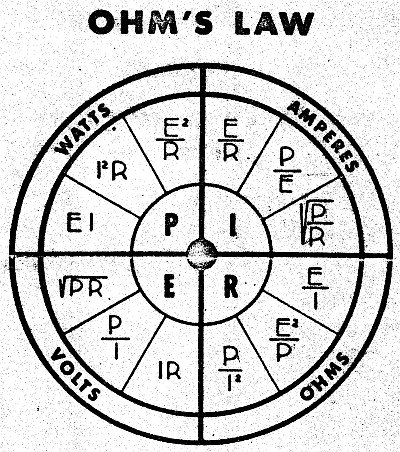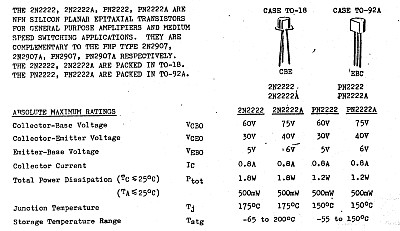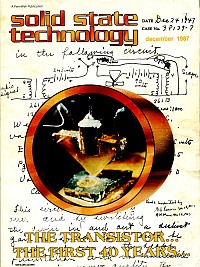Illustrations Figure 1. Ohm's Law formulas.
Figure 1. Ohm's Law formulas.
 Figure 2. A schematic diagram (partial).
Figure 2. A schematic diagram (partial).
 Figure 3. An old transistor datasheet.
Figure 3. An old transistor datasheet.
|
Electronics Theory and PracticeIntroductionElectronics is a human technology. It is studied much like any other human technology. I have even sketched out my own course on the subject. The primary barrier to any learning is the same barrier that presents
itself in any attempt to understand anything or to communicate with anything.
We communicate using symbolic There are ways to get around this problem. They all consist of ways to gain familiarity with the subject without learning its technical terms and symbols. They are useful, but limited. Because if the learner then wants to go ahead and communicate with other students or practitioners using our various symbolic communication methods, he has to know the correct symbols to use and their meanings. In a study of electronics this is particularly important, since practitioners tend to see it as an exclusive club, and are careless about whether or not their terms are understood. But the only thing that makes it a club is the fact that the meanings of the symbols and terminology of the subject must be learned. The little course I have sketched out attempts to do this. However, to introduce the subject on some level of comprehensability, I offer the following: Beings have been mystified for eons about the invisible forces that seem
to influence or control them. It is now understood that most such forces would
actually fall under the subject of electronics. Electronics, in its pure form,
is a study of the energetic behavior of matter all the way down to the level of
the electron. The electron is a particle of matter that is so evasive that though
it can be used as a tool to study ResourcesDiscover CircuitsDoug Johnson's discovercircuits.com is my favorite source for circuit designs, schematics, application notes, and links to other electronics sites. Datasheets CatalogThis is one of several sites with a huge catalog of datasheets and application notes. I find this one the easiest to use. All the files that I have found there are in pdf format. Electronics Design NewsI have found most of EDN's articles via links from other sites. They are a no-cost (ad-supported) magazine for the electronics industry. They offer many of their articles in pdf format for free, which is something many magazines don't do. U.S. Navy Electronics TrainingOne of the first books I read on transistor theory was published by the U.S. Navy.
I found it at the library. The Navy is one of the oldest military institutions, and has
always taken their job very seriously. Their work totally depends on technology, and they
have a tradition of creating and publishing training courses for sailors in all aspects
of naval technology, including, of course, electronics. These days the Navy is also
heavily involved in space programs. (They don't call them space |
 Figure 4. An engineering manual.
Figure 4. An engineering manual.
 Figure 5. An electronics magazine.
Figure 5. An electronics magazine.